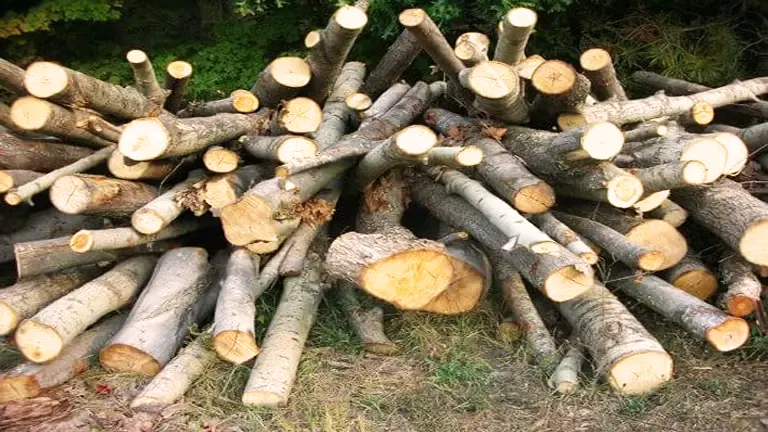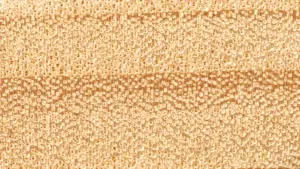European White Poplar Lumber
- July 31, 2023
- 1 comment
European White Poplar, scientifically known as Populus alba, is a cherished deciduous hardwood tree that thrives across diverse regions of Europe. Renowned for its lumber, this tree offers a plethora of desirable attributes that make it a popular choice among craftsmen and woodworkers alike. The wood’s light coloration, showcasing a soft creamy-white hue, adds an elegant touch to various projects.

Its versatility and workability further contribute to its widespread usage in numerous applications. The lumber derived from European White Poplar boasts a fine and even texture, complemented by straight grain patterns, which enhances its aesthetic appeal when finished. Its ease of use with both hand and machine tools makes it a preferred material for woodworking endeavors.
Furniture, cabinetry, interior trim, veneer, and plywood are just some of the diverse applications where European White Poplar finds its way. Additionally, the wood’s relatively affordable pricing and ready availability further add to its appeal, making it an economical and attractive option for many projects.
| Common Name(s) | European White Poplar |
|---|---|
| Scientific Name | Populus alba |
| Distribution | Various parts of Europe |
| Tree Size | 70-100 feet tall, 2-3 feet in diameter |
| Average Dried Weight | 24 lbs/ft3 (380 kg/m3) |
| Specific Gravity | 0.38 to 0.43 |
| Janka Hardness | 450 lbf (2,000 N) |
| Modulus of Rupture | 10,800 lbf/in2 (74.5 MPa) |
| Elastic Modulus | 1,570,000 lbf/in2 (10.8 GPa) |
| Crushing Strength | 5,900 lbf/in2 (40.7 MPa) |
| Shrinkage | Radial: 4.4%, Tangential: 9.2%, Volumetric: 12.7% |
Color/Appearance:
European White Poplar’s heartwood exhibits a delicate pale yellowish-white to light brown hue, while the sapwood appears lighter, providing an attractive contrast. This uniform coloration throughout the entire board adds to its appeal and allows for consistent results in finished projects. Its gentle and neutral color makes it an excellent choice for creating light and airy spaces with a touch of elegance.


Grain/Texture:
The wood boasts a straight grain pattern, contributing to its classic and timeless appearance. The fine and even texture gives the lumber a smooth surface when sanded and finished, allowing it to take on a polished and refined look. This quality makes it an appealing option for furniture and cabinetry, where a sleek and seamless finish is desired.
Rot Resistance:
European White Poplar is not naturally durable, making it susceptible to decay when exposed to damp or humid conditions. To ensure its longevity, especially in outdoor applications, it is advisable to apply appropriate protective finishes that can shield the wood from moisture and environmental elements.
Workability:
One of the most notable attributes of European White Poplar is its exceptional workability. The wood’s softness and low density make it easy to work with hand and machine tools, earning it favor among woodworkers of all skill levels. It responds well to cutting, shaping, and carving, allowing for intricate detailing in various woodworking projects. Additionally, it holds nails and screws effectively, providing stability and reliability in construction.
Odor:
European White Poplar is virtually odorless, making it a pleasant choice for indoor projects where strong aromas are undesirable.
Allergies/Toxicity:
The wood of European White Poplar is generally considered non-toxic and non-irritating to most individuals. This characteristic makes it a safe material for use in various applications without posing health concerns.
Pricing/Availability:
European White Poplar’s widespread availability and fast growth rate contribute to its affordability, making it a cost-effective option compared to many other hardwoods. Its reasonable pricing allows more accessibility to this attractive and versatile lumber.
Sustainability:
European White Poplar’s relatively fast growth rate positions it as a renewable resource when harvested responsibly. Its ability to regrow relatively quickly helps support sustainable practices, making it an environmentally-friendly choice for those conscious of ecological impact. However, as with any wood, it is crucial to ensure that the lumber is sourced from sustainably managed forests to maintain long-term environmental balance.
Common Uses:
European White Poplar finds a wide array of applications in indoor projects due to its appealing appearance and ease of workability. It is commonly utilized in the construction of furniture, cabinetry, interior trim, veneer, and plywood. The wood’s softness and tonal neutrality also make it a preferred material for specialty applications, including crafting musical instruments and intricate carvings, where its smooth texture and malleability are valued for achieving fine detailing.


FAQs:
- Is European White Poplar suitable for outdoor use?
While European White Poplar can be used outdoors for non-structural applications, it is not naturally durable and may not perform well when exposed to the elements without proper protective finishes. - How does the wood compare to other popular hardwoods in terms of hardness?
European White Poplar is relatively soft compared to many hardwoods, making it less suitable for heavy-duty applications and areas with high wear. - Is European White Poplar environmentally friendly?
When sourced from responsibly managed forests, European White Poplar is considered relatively eco-friendly due to its fast growth and renewability. - Can European White Poplar be stained or finished easily?
Yes, the wood readily accepts stains and finishes, and it can be enhanced with various coatings to achieve the desired appearance. - Are there any health concerns related to working with European White Poplar?
European White Poplar is generally considered safe to work with, and no significant health concerns are associated with it. However, as with any woodworking activity, using proper safety equipment is recommended.








Does Populus albus ever make its way across the Atlantic in board form as opposed to plywood? I need to match some for a project.
Peter Woodhouse
November 27, 2023 6:35 pm